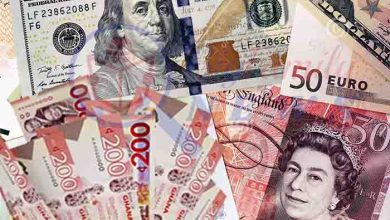
New data released by the Bank of Ghana (BoG) reveals that gold exports totaled US$8.39 billion in June 2025, exceeding the country’s total import bill of US$8.23 billion by US$160 million.
The yellow metal accounted for 61 percent of total export earnings in June, an increase from 53 percent in March, making it the nation’s largest export commodity.
Total export revenues increased to US$13.8 billion in June, up 96 percent from US$7.03 billion in March. Analysts attribute this growth to increased production volumes and favorable international commodity prices across key export categories.
The trade surplus widened from US$3.3 billion in March to US$5.57 billion in June, representing 6.4 percent of Gross Domestic Product (GDP) in June, compared to 3.8 percent in March.
Cocoa exports generated US$2.17 billion in June, an increase from US$1.6 billion in March. However, the commodity’s share of total exports decreased from 23 percent to 16 percent over the four-month period as gold exports expanded at a faster rate.
Oil exports totaled US$1.36 billion in June, increasing from US$780 million in March and US$1.09 billion in May. Compared to gold and cocoa, petroleum products represented a smaller proportion of total export earnings.
Total imports increased 120 percent from US$3.73 billion in March to US$8.23 billion in June. Non-oil imports comprised 69 percent of the total at US$5.64 billion, while oil imports accounted for 31 percent at US$2.59 billion.
The current account balance shifted from a deficit of US$117.6 million in March 2024 to a surplus of US$2.32 billion for March 2025. The improvement reflects stronger external sector performance over the twelve-month period.
Related To This
Ghana Records Trade Surplus Driven by Gold Exports
T-Bill Demand Soars, Rates Decline As Gov’t Exceeds Target
Gross international reserves reached US$11.12 billion in June, according to central bank data, demonstrating the positive impact of export earnings on the country’s external financial position.
Other exports, including manufactured goods and non-traditional commodities, increased from US$925 million in March to US$1.88 billion in June, representing 14 percent of total exports.
The data indicate Ghana’s continued reliance on commodity exports, with gold, cocoa, and oil accounting for 86 percent of total export earnings. The mining sector’s significant contribution to foreign exchange earnings underscores its importance to the country’s external stability.
While import growth exceeded export growth rates during the period, expanding 120 percent compared to 96 percent, the higher absolute value of exports ensured that the trade surplus continued to widen.
Oil imports increased from US$1.27 billion in March to US$2.59 billion in June, highlighting Ghana’s dependence on petroleum product imports despite domestic crude oil production capacity.
The balance of payments showed improvement across multiple indicators, with private transfers reaching US$3.93 billion in June and the financial account recording net inflows of US$1.60 billion.
Direct investment liabilities totaled US$926.5 million in June, indicating continued foreign investor interest in Ghana’s economy. However, portfolio investment liabilities recorded negative US$39.8 million, reflecting net outflows in this category.
The external sector data indicate structural improvements in Ghana’s trade position during the first half of 2025. Gold exports provided the primary driver of this performance, contributing substantially to foreign exchange earnings and reserve accumulation.
The trade balance performance as a percentage of GDP showed consistent improvement throughout the period, rising from 3.8 percent for March to 6.4 percent in June. This trend points to strengthening external sector fundamentals.
Analysts caution that the sustainability of current export performance hinges on continued global demand for Ghana’s primary commodities and the maintenance of production levels across key sectors.
The news comes as gold prices continue to climb, recently surpassing US$3,400 per ounce.
Global gold prices reached a new peak last week, closing at US$3,431 per ounce, driven by increased demand for safe-haven assets amidst ongoing macroeconomic uncertainty.
The domestic NewGold ETF mirrored this upward trend, gaining 2.51 percent over the week to close at GH¢373.75. Trading activity saw a significant surge, with average daily volumes increasing more than tenfold to 9,718 units, compared to 844.4 units the previous week.
This increase in trading volume also led to a surge in average daily turnover, which increased by over 600% to GH¢3.6 million. Total shares traded amounted to GH¢18.14 million, nearly ten times the previous week’s GH¢1.9 million. This shift indicates a growing investor preference for gold-backed assets amid sustained volatility in the foreign exchange market and uncertainty regarding the future direction of global interest rates.
Iron Ore Discovered In Oti Region, Potentially Best In West Africa
Gov’t Committed to Current IMF Program, No Renegotiation Planned – Finance Minister




